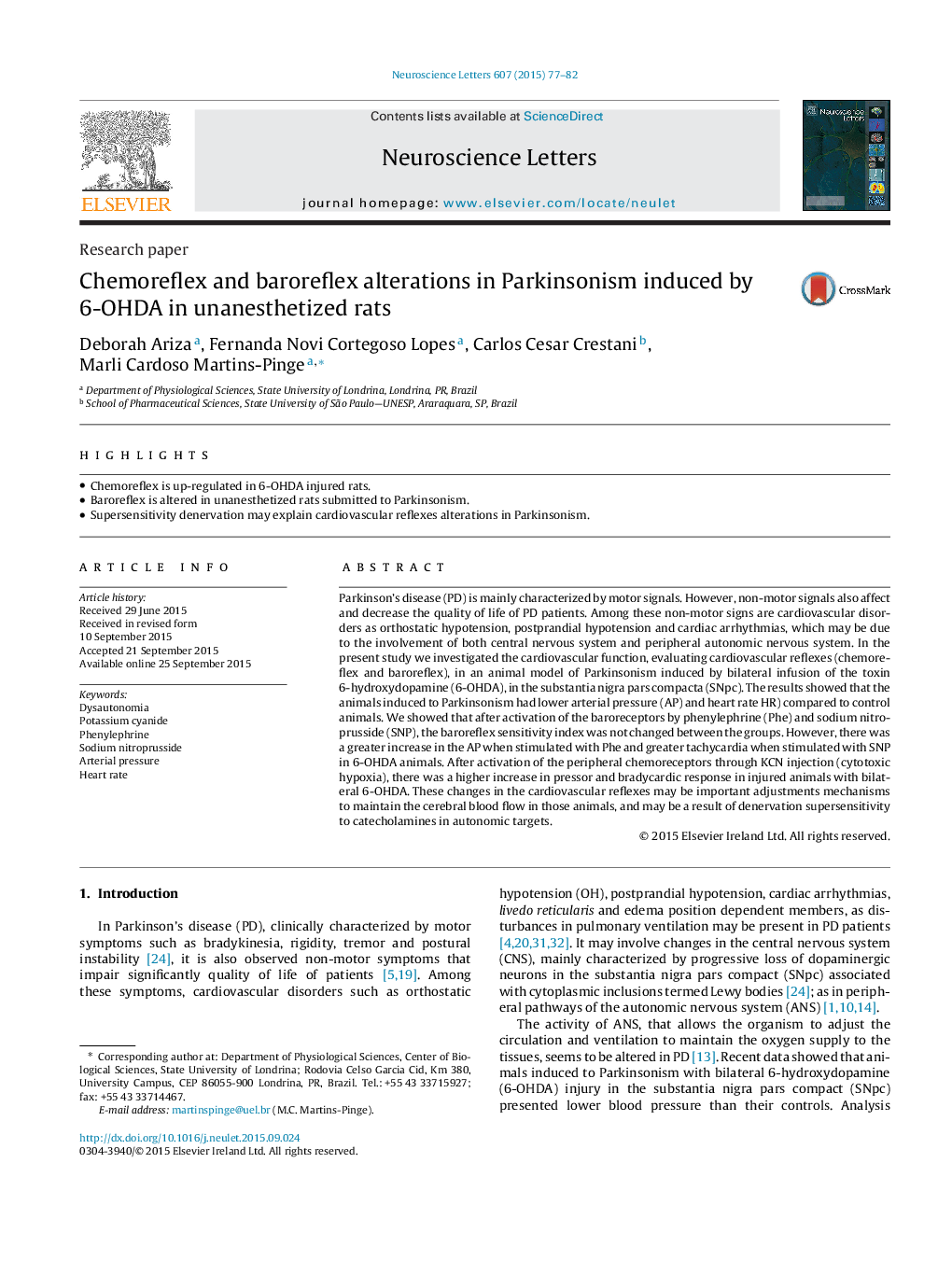| Article ID | Journal | Published Year | Pages | File Type |
|---|---|---|---|---|
| 6280599 | Neuroscience Letters | 2015 | 6 Pages |
Abstract
Parkinson's disease (PD) is mainly characterized by motor signals. However, non-motor signals also affect and decrease the quality of life of PD patients. Among these non-motor signs are cardiovascular disorders as orthostatic hypotension, postprandial hypotension and cardiac arrhythmias, which may be due to the involvement of both central nervous system and peripheral autonomic nervous system. In the present study we investigated the cardiovascular function, evaluating cardiovascular reflexes (chemoreflex and baroreflex), in an animal model of Parkinsonism induced by bilateral infusion of the toxin 6-hydroxydopamine (6-OHDA), in the substantia nigra pars compacta (SNpc). The results showed that the animals induced to Parkinsonism had lower arterial pressure (AP) and heart rate HR) compared to control animals. We showed that after activation of the baroreceptors by phenylephrine (Phe) and sodium nitroprusside (SNP), the baroreflex sensitivity index was not changed between the groups. However, there was a greater increase in the AP when stimulated with Phe and greater tachycardia when stimulated with SNP in 6-OHDA animals. After activation of the peripheral chemoreceptors through KCN injection (cytotoxic hypoxia), there was a higher increase in pressor and bradycardic response in injured animals with bilateral 6-OHDA. These changes in the cardiovascular reflexes may be important adjustments mechanisms to maintain the cerebral blood flow in those animals, and may be a result of denervation supersensitivity to catecholamines in autonomic targets.
Related Topics
Life Sciences
Neuroscience
Neuroscience (General)
Authors
Deborah Ariza, Fernanda Novi Cortegoso Lopes, Carlos Cesar Crestani, Marli Cardoso Martins-Pinge,
